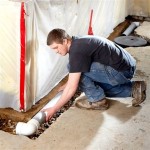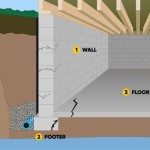My Basement Is Flooding! What Do I Do?
Basements are prone to flooding due to various factors such as heavy rainfall, snowmelt, or even plumbing issues. While a flooded basement can be a stressful experience, taking prompt action can help minimize damage and prevent further complications.
1. Safety First:
Before attempting to address the flooding, ensure your safety. Turn off the electricity at the main breaker panel to prevent electrical hazards. If the water level is high or the current is strong, do not enter the basement. Call for professional help immediately.
2. Identify the Source:
If possible, try to locate the source of the flooding. Check for broken pipes, leaking appliances, or any other obvious water entry points. If you cannot identify the source, it is best to seek professional assistance.
3. Pump Out Water:
Once the source is identified or the water level has stabilized, begin pumping out the water. Use a submersible pump specifically designed for water removal. Place the pump in the lowest point of the basement and connect it to a discharge hose that leads outside or to a drain. Allow the pump to run until all the water is removed.
4. Dry Out the Basement:
After the water has been removed, focus on drying out the basement as quickly as possible to prevent mold and mildew growth. Open windows and doors to allow air circulation. Use dehumidifiers and fans to extract moisture from the air. Mop up any remaining water and remove any wet items such as carpeting or furniture.
5. Disinfect the Basement:
Once the basement is dry, disinfect it to kill any bacteria or mold spores that may have accumulated during the flooding. Use a bleach solution (1 cup of bleach per gallon of water) and apply it to all surfaces that came into contact with floodwater. Allow the solution to sit for several minutes before rinsing it off.
6. Inspect for Damage:
After the basement is dry and disinfected, carefully inspect for any damage caused by the flooding. Check for cracks in walls or floors, damaged appliances, and any other signs of water intrusion. If any significant damage is found, consult a professional for repairs.
7. Prevent Future Flooding:
To prevent future flooding, consider implementing some preventive measures. Clean gutters and downspouts to ensure proper drainage. Install a sump pump with a battery backup to automatically remove water in case of heavy rain or snowmelt. Seal any cracks or openings around windows and doors to prevent water seepage. Regularly check for leaks in plumbing fixtures and appliances.

So Your Basement Flooded Now What Foundation Repair Permanent Solutions To Problems Thrasher News And Events For

How To Clean A Flooded Basement Reviews By Wirecutter

How To Prevent Basement Flooding Complete Strategy

The Ultimate Basement Drainage System For Flooding

What To Do If Basement Floods Every Time It Rains Expert Advice

My Basement Has Flooded What Do I Puroclean Of West Boise

Expert Tips On What To Do If Your Basement Floods

Extreme Flooding When And Not To Remove Water From Your Basement Foundation Repair Permanent Solutions Problems Thrasher News Events For

What To Do When Your Basement Floods The Strategist

What To Do When Your Basement Floods Youtube
See Also








